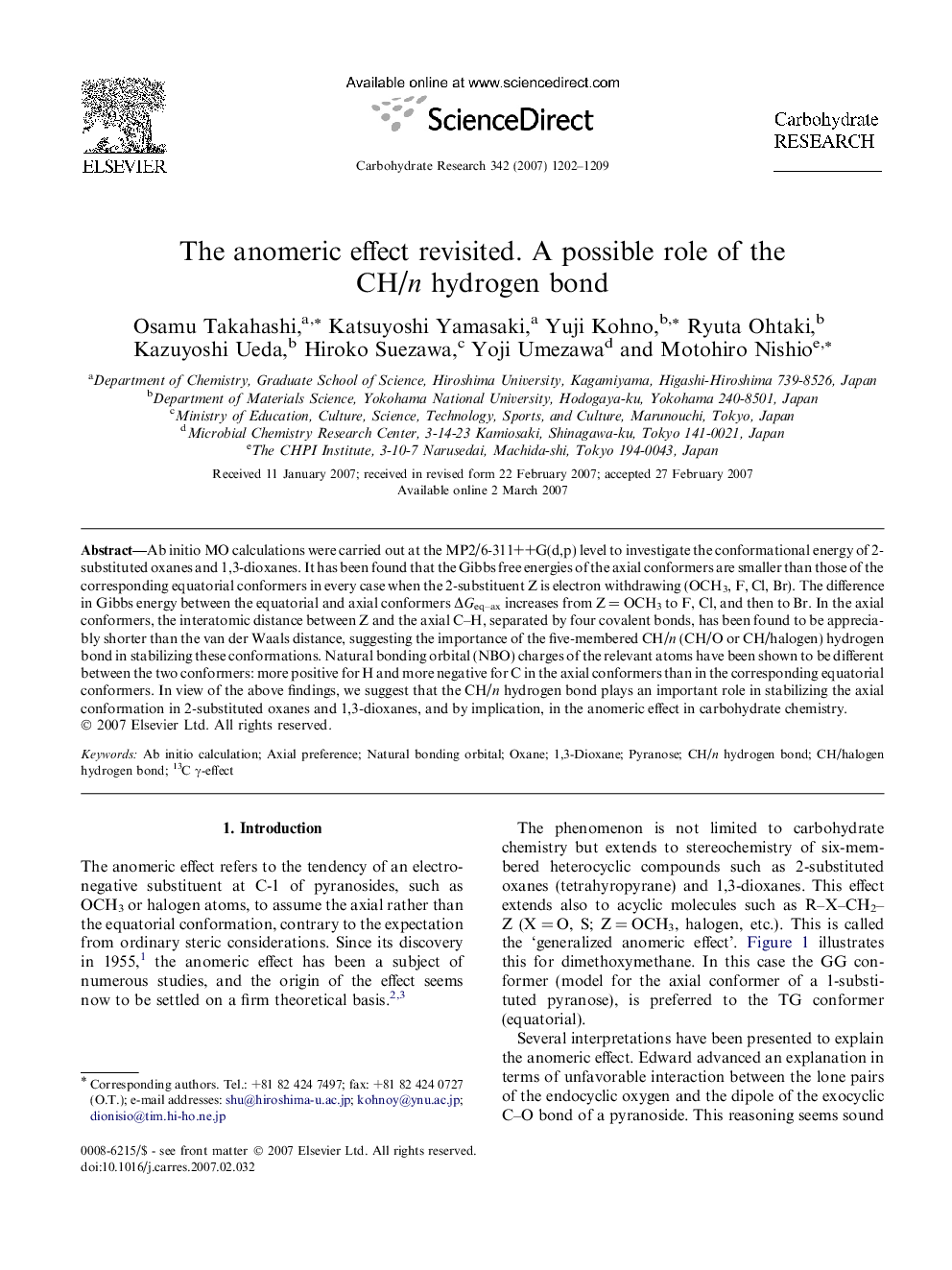| Article ID | Journal | Published Year | Pages | File Type |
|---|---|---|---|---|
| 1388917 | Carbohydrate Research | 2007 | 8 Pages |
Ab initio MO calculations were carried out at the MP2/6-311++G(d,p) level to investigate the conformational energy of 2-substituted oxanes and 1,3-dioxanes. It has been found that the Gibbs free energies of the axial conformers are smaller than those of the corresponding equatorial conformers in every case when the 2-substituent Z is electron withdrawing (OCH3, F, Cl, Br). The difference in Gibbs energy between the equatorial and axial conformers ΔGeq–ax increases from Z = OCH3 to F, Cl, and then to Br. In the axial conformers, the interatomic distance between Z and the axial C–H, separated by four covalent bonds, has been found to be appreciably shorter than the van der Waals distance, suggesting the importance of the five-membered CH/n (CH/O or CH/halogen) hydrogen bond in stabilizing these conformations. Natural bonding orbital (NBO) charges of the relevant atoms have been shown to be different between the two conformers: more positive for H and more negative for C in the axial conformers than in the corresponding equatorial conformers. In view of the above findings, we suggest that the CH/n hydrogen bond plays an important role in stabilizing the axial conformation in 2-substituted oxanes and 1,3-dioxanes, and by implication, in the anomeric effect in carbohydrate chemistry.
Graphical abstractFigure optionsDownload full-size imageDownload as PowerPoint slide
